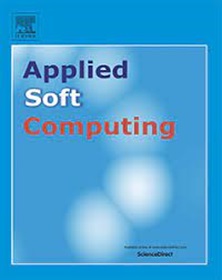Segmentation of the customers based on customer value: A three-way decision perspective
IF 7.2
1区 计算机科学
Q1 COMPUTER SCIENCE, ARTIFICIAL INTELLIGENCE
引用次数: 0
Abstract
This paper establishes an innovative value evaluation framework based on the criterion-oriented three-way decision (3WD) in the double hierarchy linguistic term (DHLT) environment to help the customer manager finish customer segmentation. Customer relationship management is the key to the success of enterprises in the information economy era. The segmentation of customers based on their relative criteria can identify the customers who are high-value customers for enterprises. However, multi-criteria decision-making can only display the value ranking of customers, rather than the value segmentation of customers. The employment of 3WD solves this problem. Then we classify the customers based on the 3WD method. First, the criteria are evaluated by using DHLTs, while the weights of criteria are acquired according to the maximum deviation method. Second, the conditional probabilities are estimated by the improved TOPSIS method combined with gray relation analysis, while the threshold values are calculated by the relative utilities which are constructed on the basis of the criterion information. Subsequently, the segmentation of customers is obtained according to the maximum-utility principle. Lastly, case research about the segmentation of customers based on value is used to demonstrate the practicality of our method, while some strategies about customer relationship management are given based on customer segmentation for obtaining maximum returns with minimum investment.
基于客户价值的客户细分:三方决策视角
本文在双层次语言术语(DHLT)环境下建立了基于面向准则的三向决策(3WD)的创新价值评估框架,以帮助客户经理完成客户细分。客户关系管理是信息经济时代企业成功的关键。根据客户的相对标准对客户进行细分,可以识别出哪些客户是企业的高价值客户。然而,多标准决策只能显示客户的价值排序,而不能显示客户的价值细分。3WD 的应用解决了这一问题。然后,我们根据 3WD 方法对客户进行分类。首先,使用 DHLT 对标准进行评估,并根据最大偏差法获得标准的权重。其次,利用改进的 TOPSIS 方法结合灰色关系分析估算条件概率,并根据标准信息构建的相对效用计算阈值。随后,根据最大效用原则对客户进行细分。最后,利用基于价值的客户细分案例研究来证明我们的方法的实用性,同时给出了一些基于客户细分的客户关系管理策略,以最小的投资获得最大的回报。
本文章由计算机程序翻译,如有差异,请以英文原文为准。
求助全文
约1分钟内获得全文
求助全文
来源期刊

Applied Soft Computing
工程技术-计算机:跨学科应用
CiteScore
15.80
自引率
6.90%
发文量
874
审稿时长
10.9 months
期刊介绍:
Applied Soft Computing is an international journal promoting an integrated view of soft computing to solve real life problems.The focus is to publish the highest quality research in application and convergence of the areas of Fuzzy Logic, Neural Networks, Evolutionary Computing, Rough Sets and other similar techniques to address real world complexities.
Applied Soft Computing is a rolling publication: articles are published as soon as the editor-in-chief has accepted them. Therefore, the web site will continuously be updated with new articles and the publication time will be short.
 求助内容:
求助内容: 应助结果提醒方式:
应助结果提醒方式:


